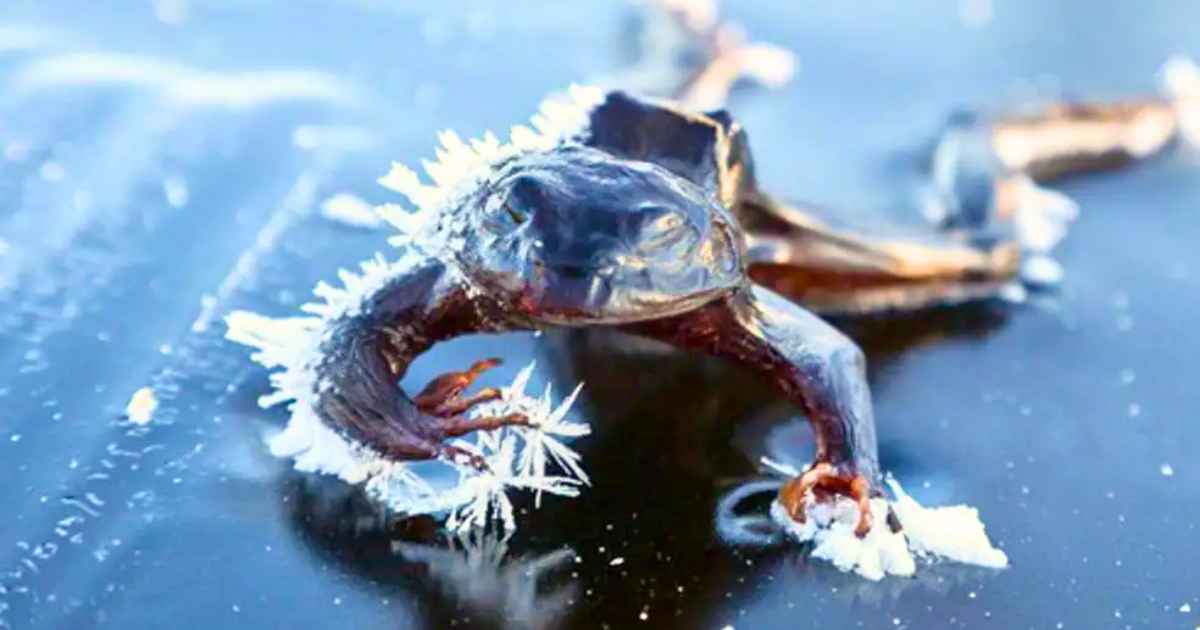These Frogs actually Freeze in the Winter and Come Back to Life in the Spring

Frogs have the incredible ability to entirely freeze their bodies during cold conditions and when it gets warm, thaw back to life and go on their way — without missing a hop.
While all wild animals have means of managing the winter season, few perform a feat quite like the frog. Instead of migrating to warmer places or burying deep down into the earth for hibernation, frogs choose to remain slightly burrowed in hibernacula patches beneath the loose soil and fallen leaves, completely exposed to the changing climate around them.
They essentially mimic weather conditions — when the ground freezes, the frogs freeze themselves, and when the ground thaws, they thaw. On an organismal level, they are completely frozen to death — their heart stops beating and breathing ceases.

The frog’s death-defying trick actually comes down to one simple factor: nucleating proteins. When the frog’s skin begins to freeze, these proteins cause the water within the frog’s blood to freeze first, which in turn serves as a vacuum for most of the water out of the cells.
Simultaneously, their bodies pump out large amounts of glucose to serve as stuffing material, which prevents the cells from collapsing.
Essentially, frogs fill their bodies full of sugar to keep themselves alive through winter. When warm temperatures melt the snow around their hibernacula, frogs slowly thaw back to life.
Water melts and returns to the bloodstream, begins circulating, and restarts their heart and breathing. Within an hour or so the frog returns to normal life, completely unscathed.
Remarkably, the frogs are capable of performing this freeze-thaw process an unlimited number of times throughout the year.
Scientists hope to eventually be able to apply this physiological adaptation in the world of human medicine.

Video:









